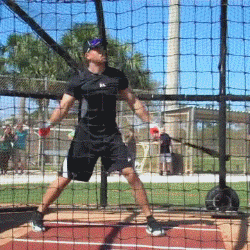Look... I posed an experiment, you responded with comments that it was abduction and adduciton. I went with that and am asking some follow up based on your answer. This has nothing to do with "explaining it" whatever you think that is.
I am asking you (the expert) specific questions about a movement that you said was happening. Is it really that hard to address the questions that are asked instead of making it about something else?
Your experiment is not one that fits good scientific criteria. You have too many muscles activated all at the same time, and your body is not subject to the same physics forces of a swing. You may think so, but the subtle differences make a huge difference.
I've told you over and over. The back leg applies a pushing force into the bottom of the pelvis which makes it move forward and begin to rotate. Once the weight shifts to the front foot, the pelvis PULLS on the back leg as the pelvis rotates, and the back leg then internally rotates as it is pulled forward. The internal rotation phase is not supplying power to continue the torso rotation. The power came prior to that.




